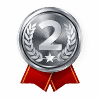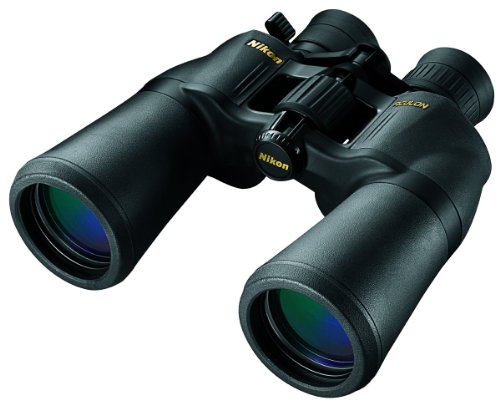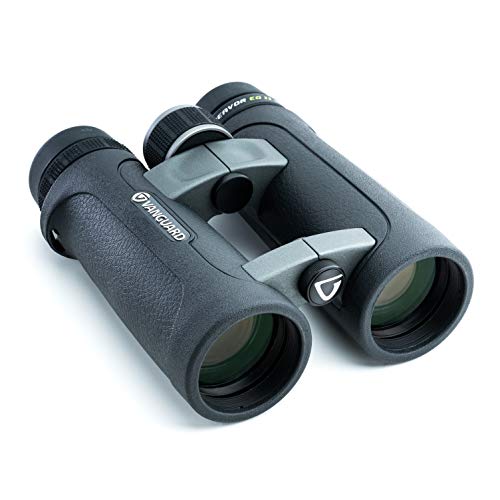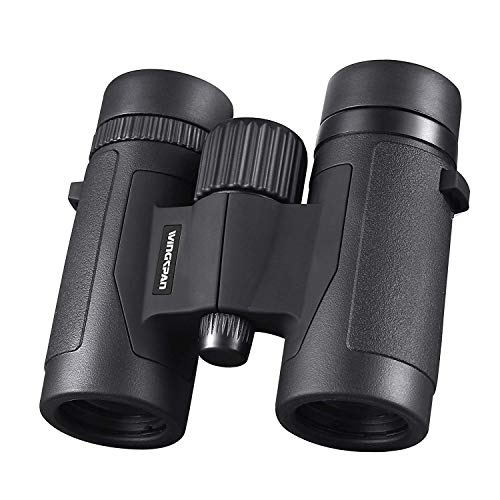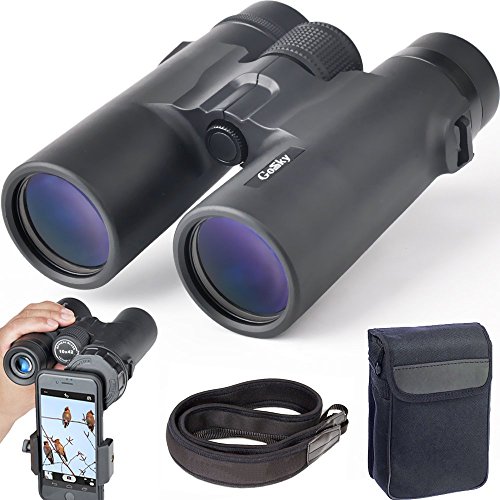6 Best Binoculars for Yellowstone National Park in 2025 – Top Picks & Reviews
Last Updated on
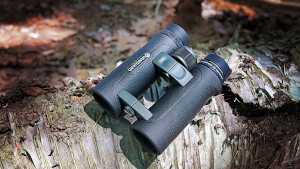
In these binocular reviews, we look at equipment suited for the rugged, beautiful terrain of Yellowstone National Park. The goal is simple: to connect you with a pair of binoculars that matches your needs regardless of budget.
To ensure a list that has something for everyone, we tested lots of different equipment, allowing only the best to make the cut.
The work left over for you is pretty simple. Just sit back, read the reviews, and pick the right pair of binoculars for your special trip.

A Quick Look At Our Favorites
| Image | Product | Details | ||
|---|---|---|---|---|
| Best Overall |
 |
Nikon 8252 |
|
CHECK PRICE |
 |
Vanguard Endeavor |
|
CHECK PRICE | |
| Best Value |
 |
Bushnell H2O |
|
CHECK PRICE |
 |
Celestron 71332 |
|
CHECK PRICE | |
 |
Wingspan Optics Spectator |
|
CHECK PRICE |
The 6 Best Binoculars for Yellowstone National Park
1. Nikon 8252 ACULON A211 10-22×50 Zoom Binocular – Best Overall
The Nikon 8252 features a lightweight ergonomic build that will be perfect for Yellowstone’s famously intricate trails. It also features easy-to-use controls for magnification and focus adjustment, and an impressive range that allows for clarity hundreds of feet away.
The glass itself is also high-quality, with a finish that maximizes light for consistently vibrant images. The image quality does diminish somewhat when you amplify the magnification, but this is to be expected from a product for amateur use.
If you’re buying on a budget, you’ll also want to be mindful of the sticker price. The Nikon is expensive but well worth the cost if you want the best binoculars you can get.
- Lightweight
- Ergonomic
- Large range
- Easy to adjust
- It’s a zoom binocular
- Image quality diminishes slightly when magnified
- Costly
2. Vanguard Endeavor ED 8×42 Binocular
The Vanguard Endeavor features color dispersion glass that maximizes viewing quality. This is a good thing too, as this is another pair of binoculars with an impressive range that spans hundreds of feet.
It’s also well suited for the terrain of a state park. The exterior of the binoculars is shock-resistant and well sealed against moisture and fog, so you won’t need to worry about inclement weather ruining the tool.
The eye-ring is also made for comfort—a very useful feature if you plan on having the binoculars up to your face for long periods of time (and at Yellowstone, there is quite a bit to see!).
Unfortunately, this pair is cumbersome. The heavy build makes it a little uncomfortable to take on long hikes. The adjustment hardware is also somewhat flimsy, which may prove a problem over time. The exterior itself is very sturdy, but if your focus knobs break off, that won’t matter much!
- Shock-resistant
- Sealed to resist water and fog
- Massive range
- Heavy
- Flimsy hardware
3. Bushnell H2O 8×42 Roof Prism Binocular – Best Value
The Bushnell H2O is an affordable set of binoculars specifically suited for use near water (hence the H2O in the name). The streams, lakes, and ponds at Yellowstone won’t prove perilous thanks to the effective waterproof seal.
It also features an impressive 10X magnification capacity for clear views of sights from up to three hundred feet away.
They do suffer the same unfortunate flaw as the last pair: they’re hefty. The eyepiece also can be uncomfortable to use over time. These are both issues that may be problems for long outings.
For the money though, you’d be hard put to find a worthier pair of binoculars.
- Affordable
- 100% waterproof
- Heavy
- Uncomfortable to use over time
4. Celestron 71332 Nature DX 8×42 Binoculars
The Celestron 71332 is good for viewing things both near and far. It includes a close focus feature that allows you to precisely view objects that are just six feet away. This is an especially handy means of getting a look at a rare bird or an out-of-reach flower.
The Celestron is also armored with a thick rubber exterior that will stand up to shock, and it has the standard waterproof sealing necessary for any binoculars that are going to be seeing action.
On the other hand, the quality does suffer in other departments. These pricey binoculars are not comfortable to use, particularly because of an awkward eyepiece. The image quality also suffers greatly the farther out you look.
For viewing up close, these binoculars are great. Outside of that, it’s an experience of diminishing returns.
- Close viewing feature
- Waterproof
- Uncomfortable
- Pricey
- Low-quality viewing from a distance
5. Wingspan Optics Spectator 8X32 Binoculars
The Wingspan Optics Spectator is a compact set that will be easy to take on the trail with you. In addition to being portable, it’s also efficient. The lenses are designed to deliver both wide “field” views and more zoomed-in looks at your subjects.
The manufacturer advertises a crystal-clear image at up to 3000 feet, but unfortunately, this is not quite the case. You may be able to make some things out from that distance, but the further you zoom, the poorer the image quality gets.
Additionally, they suffer from a narrow build and an uncomfortable eyepiece that makes them awkward to use. If you’re buying on a budget, the Wingspan Optics binoculars are still worth checking out but be prepared for some unfortunate issues.
- Affordable
- Field and focus view
- Diminishing image quality
- Too narrow
- Uncomfortable eyepiece
6. Gosky 10×42 Roof Prism Binoculars
The Gosky 10×42 makes a splash with an interesting smartphone adapter on the lenses. The adapter allows you to hook your phone up to the binoculars and effectively use the lenses as a camera.
The actual quality of this pair in terms of clarity and durability doesn’t compare well to the other products on our list. These binoculars aren’t the sturdiest, so if you drop them it may spell their doom.
They also just don’t render the same vivid viewing experience that the others deliver. However, casual users will be able to have fun with the connectivity feature. What better way to commemorate your trip than a series of high-quality photos and videos taken on your phone?
- Phone connectivity
- Not very high-quality viewing
- Fragile
- Uncomfortable

Conclusion:
One thing these binocular reviews made clear is that there are lots of high-quality options out there. The task now is to narrow it down to one. Do you want uncompromising quality, ruggedness, and clarity, which come together to make the best binoculars for Yellowstone National Park? If so, you might find it worthwhile to splurge on our top pick, the Nikon 8252 ACULON A211 10-22×50 Zoom Binocular.
Of course, buying from the top shelf doesn’t work for everyone. If you want to be more mindful of your budget, think about going with our best for the money choice, the Bushnell H2O 8×42 Roof Prism Binocular.
We also recently reviewed safari binoculars. Click here to see our 5 favorite models.
About the Author Robert Sparks
Robert’s obsession with all things optical started early in life, when his optician father would bring home prototypes for Robert to play with. Nowadays, Robert is dedicated to helping others find the right optics for their needs. His hobbies include astronomy, astrophysics, and model building. Originally from Newark, NJ, he resides in Santa Fe, New Mexico, where the nighttime skies are filled with glittering stars.
Related Articles:
When Were Binoculars Invented? History, Today & Future
How to Clean a Refractor Telescope: Step-by-Step Guide
How to Clean a Telescope Eyepiece: Step-by-Step Guide
How to Clean a Rifle Scope: 8 Expert Tips
Monocular vs Telescope: Differences Explained (With Pictures)
What Is a Monocular Used For? 8 Common Functions
How to Clean a Telescope Mirror: 8 Expert Tips
Brightfield vs Phase Contrast Microscopy: The Differences Explained


